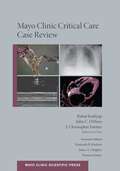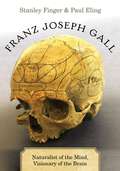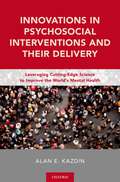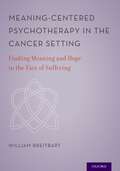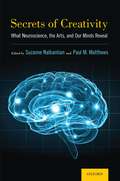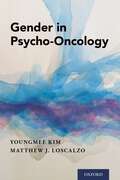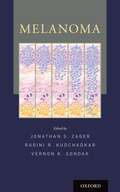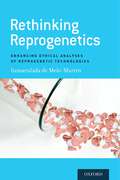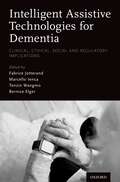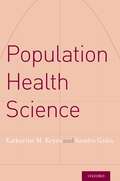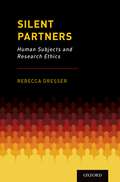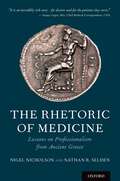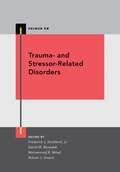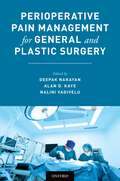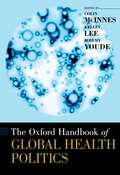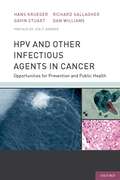- Table View
- List View
Mayo Clinic Critical Care Case Review (Mayo Clinic Scientific Press)
by Rahul Kashyap, John C. O’HoroMayo Clinic Critical Care Case Review is a unique compellation of cases presented at the highly rated Mayo Clinic Clinical Pathological Case (CPC) Conference. Designed to cover rare cases in a short amount of time, these reviews are set up in what is called the "unknown" format: highlighting the clinically key elements of the patient's hospital course, singling out the diagnostic dilemmas, and concludes with a question and answer format that allows clinicians to take home relative points for clinical practice. Written by practicing intensivists and critical care fellows for practicing intensivists and critical care fellows, this book combines interesting reading experiences with critical care medicine review. Each chapter ends with questions and answers that provide a board style review for the readers. Each case begins on the left-hand page with the discussion on the right, written succinctly to provide quick diagnostic understanding. While most critical care review books focus solely on an organ-system format, Mayo Clinic Critical Care Case Review captures the spirit of the CPC Conference in its text and illustrations.
Mayo Clinic Critical Care Case Review (Mayo Clinic Scientific Press)
Mayo Clinic Critical Care Case Review is a unique compellation of cases presented at the highly rated Mayo Clinic Clinical Pathological Case (CPC) Conference. Designed to cover rare cases in a short amount of time, these reviews are set up in what is called the "unknown" format: highlighting the clinically key elements of the patient's hospital course, singling out the diagnostic dilemmas, and concludes with a question and answer format that allows clinicians to take home relative points for clinical practice. Written by practicing intensivists and critical care fellows for practicing intensivists and critical care fellows, this book combines interesting reading experiences with critical care medicine review. Each chapter ends with questions and answers that provide a board style review for the readers. Each case begins on the left-hand page with the discussion on the right, written succinctly to provide quick diagnostic understanding. While most critical care review books focus solely on an organ-system format, Mayo Clinic Critical Care Case Review captures the spirit of the CPC Conference in its text and illustrations.
Franz Joseph Gall: Naturalist of the Mind, Visionary of the Brain
by Stanley Finger Paul ElingFranz Joseph Gall (1758-1828) was always a controversial figure, as was his doctrine, later called phrenology. Although often portrayed as a discredited buffoon, who believed he could assess a person's strengths and weaknesses by measuring cranial bumps, he was, in fact, a serious physician-scientist, who strove to answer timely questions about the mind, brain, and behavior. In many ways a remarkable visionary, his seminal ideas would become tenets of modern behavioral neuroscience. Among other things, he was the first scientist to promote publicly the idea of specialized cortical areas for diverse higher functions, while taking metaphysics out of his new science of mind. Moreover, although he obviously placed too much emphasis on "tell-tale" skull features (mistakenly believing that the cranium faithfully reflects the features of underlying brain areas), he fully understood the strength of "convergent operations," conducting neuroanatomical, developmental, cross-species, gender-comparison, and brain-damage studies on both humans and animals in his attempts to unravel the mysteries of brain organization. Rather than looking upon Gall's "organology" as one of science's great mistakes, this book provides a fresh look at the man and his doctrine. The authors delve into his motives, what was known about the brain during the 1790s, and the cultural demands of his time. Gall is rightfully presented as an early-19th-century biologist, anthropologist, philosopher, and physician with an inquisitive mind and a challenging agenda--namely, how to account for species and individual differences in behavior. In this well-researched book, readers learn why, starting as a young physician in Vienna and continuing his life's work in Paris, he chose to study the mind and the brain, why he employed his various methods, why he relied so heavily on cranial features, and why he wrote what he did in his books. Frequently using Gall's own words, they show his impact in various domains, including his approach to the insane and criminals, before concluding with his final illness and more lasting legacy.
The Risk of a Lifetime: How, When, and Why Procreation May Be Permissible
by Rivka WeinbergHaving children is probably as old as the first successful organism. It is often done thoughtlessly. This book is an argument for giving procreating some serious thought, and a theory of how, when, and why procreation may be permissible. Rivka Weinberg begins with an analysis of the kind of act procreativity is and why we might be justifiably motivated to engage in it. She then proceeds to argue that, by virtue of our ownership and control of the hazardous material that is our gametes, we are parentally responsible for the risks we take with our gametes and for the persons that develop when we engage in activity that allows our gametes to unite with others and develop into persons. Further argument establishes that when done respectfully, and in cases where the child's chances of leading a life of human flourishing are high, procreation may be permissible. Along the way, Weinberg argues that the non-identity problem is a curiously common mistake. Arguments intending to show that procreation is impermissible because life is bad for people and imposed on them without their consent are shown to have serious flaws. Yet because they leave us with lingering concerns, Weinberg argues that although procreation is permissible under certain conditions, it is not only a welfare risk but also a moral risk. Still, it is a risk that is often permissible for us to take and impose, given our high level of legitimate interest in procreativity. In order to ascertain when the procreative risk is permissible to impose, contractualist principles are proposed to fairly attend to the interests prospective parents have in procreating and the interests future people have in a life of human flourishing. The principles are assessed on their own merits and in comparison with rival principles. They are then applied to a wide variety of procreative cases.
Innovations in Psychosocial Interventions and Their Delivery: Leveraging Cutting-Edge Science to Improve the World's Mental Health
by Alan E. KazdinMillions of children, adolescents, and adults worldwide experience significant mental health problems, for which they receive no treatment whatsoever. Despite decades of world-class, innovative treatment research, growing governmental and public attention to mental health issues, and decreasing stigma around seeking care, the supply of tools and resources available to combat the burdens of mental illness globally are vastly outweighed by demand for services. Innovations in Psychosocial Interventions and Their Delivery provides an integrated and detailed overview of advances, challenges, and necessary new directions with regard to evidence-based psychological interventions. Drawing on diverse fields such as public health, business, entertainment, social policy and law, and other domains that may inform efforts to deliver interventions more effectively, Alan Kazdin explores an assortment of novel and inventive ways to address the world's mental health crisis. Focusing attention on promising scientific developments and the special challenges that emerge in evaluating and delivering such interventions, the book examines opportunities such as trans-diagnostic treatments, inventive uses of technology, complementary approaches, novel methods of dissemination such as task-shifting, and more. The first to bring together such diverse perspectives in an effort to show precisely and practically how treatments could be delivered effectively and in a scalable manner, Innovations in Psychosocial Interventions and Their Delivery has direct and immediate implications for health care systems but also for research and clinical practice in the mental health professions. It will be of keen interest to those in psychology, psychiatry, social work, family studies, counseling, nursing, and healthcare administration.
Meaning-Centered Psychotherapy in the Cancer Setting: Finding Meaning and Hope in the Face of Suffering
by William BreitbartMeaning-Centered-Psychotherapy in the Cancer Setting provides a theoretical context for Meaning-Centered Psychotherapy (MCP), a non-pharmalogic intervention which has been shown to enhance meaning and spiritual well-being, increase hope, improve quality of life, and significantly decrease depression, anxiety, desire for hastened death, and symptom burden distress in the cancer setting. Based on the work of Viktor Frankl and his concept of logotherapy, MCP is an innovative intervention for clinicians practicing in fields of Psycho-oncology, Palliative Care, bereavement, and cancer survivorship. This volume supplements two treatment manuals, Meaning-Centered Group Psychotherapy (MCGP) for Patients with Advanced Cancer and Individual Meaning -Centered Psychotherapy (IMCP) for Patients with Advanced Cancer by Dr. Breitbart, which offer a step-wise outline to conducting a specific set of therapy sessions. In addition to providing a theoretical background on the MCP techniques provided in the treatment manuals, this volume contains chapters on adapting MCP for different cancer-related populations and for different purposes and clinical problems including: interventions for cancer survivors, caregivers of cancer patients, adolescents and young adults with cancer, as a bereavement intervention, and cultural and linguistic applications in languages such as Mandarin, Spanish, and Hebrew.
Secrets of Creativity: What Neuroscience, the Arts, and Our Minds Reveal
Secrets of Creativity: What Neuroscience, the Arts, and Our Minds Reveal draws on insights from leading neuroscientists and scholars in the humanities and the arts to probe creativity in its many contexts, in the everyday mind, the exceptional mind, the scientific mind, the artistic mind, and the pathological mind. Components of creativity are specified with respect to types of memory, forms of intelligence, modes of experience, and kinds of emotion. Authors in this volume take on the challenge of showing how creativity can be characterized behaviorally, cognitively, and neurophysiologically. The complementary perspectives of the authors add to the richness of these findings. Neuroscientists describe the functioning of the brain and its circuitry in creative acts of scientific discovery or aesthetic production. Humanists from the fields of literature, art, and music give analyses of creativity in major literary works, musical compositions, and works of visual art.
Gender in Psycho-Oncology
by Youngmee Kim and Matthew J. LoscalzoAs cancer treatment has evolved toward precision medicine, psychosocial research and practices for cancer patients and their family members have also raised awareness of the need for a personalized, patient-focused, family-oriented approach in the Psycho-Oncology field. Gender in Psycho-Oncology is the first book of its kind to provide comprehensive views on the role of gender in the adjustment of the individual and the patient-caregiver pair when dealing with cancer. The text explores the significant role of gender in diverse pairings of genders between the patient and the caregiver. It also highlights the importance of age, generation, and socio-cultural characteristics; the illness trajectory and lifespan trajectory of the individual and the patient-caregiver pair; and an ongoing sociocultural movement that is changing social role expectations based on gender. Offering both fundamental and practical information, Gender in Psycho-Oncology is an ideal book for healthcare practitioners from a spectrum of disciplines in the Psycho-Oncology field.
Gender in Psycho-Oncology
As cancer treatment has evolved toward precision medicine, psychosocial research and practices for cancer patients and their family members have also raised awareness of the need for a personalized, patient-focused, family-oriented approach in the Psycho-Oncology field. Gender in Psycho-Oncology is the first book of its kind to provide comprehensive views on the role of gender in the adjustment of the individual and the patient-caregiver pair when dealing with cancer. The text explores the significant role of gender in diverse pairings of genders between the patient and the caregiver. It also highlights the importance of age, generation, and socio-cultural characteristics; the illness trajectory and lifespan trajectory of the individual and the patient-caregiver pair; and an ongoing sociocultural movement that is changing social role expectations based on gender. Offering both fundamental and practical information, Gender in Psycho-Oncology is an ideal book for healthcare practitioners from a spectrum of disciplines in the Psycho-Oncology field.
Melanoma
by Jonathan S. Zager, Ragini R. Kudchadkar and Vernon K. SondakMelanoma is a concise handbook that identifies best-practice guidelines and presents the most current procedures for the diagnosis and management of melanoma in a succinct and easy-to-read manner. Chapters cover melanoma pathology, biopsy techniques, staging and risk stratification, surgical treatment of localized melanoma, immunotherapy, radiation therapy, and guidelines for resected melanoma, targeted therapy, cytotoxic chemotherapy, and management of brain metastases, mucosal and ocular melanoma, and pediatric melanoma patients. This handbook is a must-have tool for clinicians directly involved in the care of patients with melanoma, including surgical oncologists, medical oncologists, and radiation oncologists.
Rethinking Reprogenetics: Enhancing Ethical Analyses of Reprogenetic Technologies
by Inmaculada de Melo-MartinReprogenetic technologies, which combine the power of reproductive techniques with the tools of genetic science and technology, promise prospective parents a remarkable degree of control to pick and choose the likely characteristics of their offspring. Not only can they select embryos with or without particular genetically-related diseases and disabilities but also choose embryos with non-disease related traits such as sex. Prominent authors such as Agar, Buchanan, DeGrazia, Green, Harris, Robertson, Savulescu, and Silver have flocked to the banner of reprogenetics. For them, increased reproductive choice and reduced suffering through the elimination of genetic disease and disability are just the first step. They advocate use of these technologies to create beings who enjoy longer and healthier lives, possess greater intellectual capacities, and are capable of more refined emotional experiences. Indeed, Harris and Savulescu in particular take reprogenetic technologies to be so valuable to human beings that they have insisted that their use is not only morally permissible but morally required. Rethinking Reprogenetics challenges this mainstream view with a contextualised, gender-attentive philosophical perspective. De Melo-Martín demonstrates that you do not have to be a Luddite, social conservative, or religious zealot to resist the siren song of reprogenetics. Pointing out the flawed nature of the arguments put forward by the technologies' proponents, Rethinking Reprogenetics reveals the problematic nature of the assumptions underpinning current evaluations of these technologies and offers a framework for a more critical and sceptical assessment.
Rethinking Reprogenetics: Enhancing Ethical Analyses of Reprogenetic Technologies
by Inmaculada de Melo-MartinReprogenetic technologies, which combine the power of reproductive techniques with the tools of genetic science and technology, promise prospective parents a remarkable degree of control to pick and choose the likely characteristics of their offspring. Not only can they select embryos with or without particular genetically-related diseases and disabilities but also choose embryos with non-disease related traits such as sex. Prominent authors such as Agar, Buchanan, DeGrazia, Green, Harris, Robertson, Savulescu, and Silver have flocked to the banner of reprogenetics. For them, increased reproductive choice and reduced suffering through the elimination of genetic disease and disability are just the first step. They advocate use of these technologies to create beings who enjoy longer and healthier lives, possess greater intellectual capacities, and are capable of more refined emotional experiences. Indeed, Harris and Savulescu in particular take reprogenetic technologies to be so valuable to human beings that they have insisted that their use is not only morally permissible but morally required. Rethinking Reprogenetics challenges this mainstream view with a contextualised, gender-attentive philosophical perspective. De Melo-Martín demonstrates that you do not have to be a Luddite, social conservative, or religious zealot to resist the siren song of reprogenetics. Pointing out the flawed nature of the arguments put forward by the technologies' proponents, Rethinking Reprogenetics reveals the problematic nature of the assumptions underpinning current evaluations of these technologies and offers a framework for a more critical and sceptical assessment.
Intelligent Assistive Technologies for Dementia: Clinical, Ethical, Social, and Regulatory Implications
by Fabrice Jotterand, Marcello Ienca, Tenzin Wangmo, Bernice S. ElgerThe financial burden and the level of specialized care required to look after older adults with dementia has reached the point of a public health crisis. Older adults diagnosed and living with the disorder reached 35.6 million worldwide in 2010 and is expected to increase to 135.5 million in 2050, with costs soaring to $1.1 trillion. In the face of the increasing burden this disorder poses to health care systems and the management of this patient population, intelligent assistive technologies (IATs) represent a remarkable and promising strategy to meet the need of persons suffering from dementia. These technologies aim at helping individuals compensate for specific physical and cognitive deficits, and maintain a higher level of independence at home and in everyday activities. However, the rapid development and widespread implementation of these technologies are not without associated challenges at multiple levels. An international and multidisciplinary group of authors provide future-oriented and in-depth analysis of IATs. Part I delineates the current landscape of intelligent assistive technologies for dementia care and age-related disability from a global perspective, while the contributions in Part II analyze and address the major psycho-social implications linked to the development and clinical use of IATs. In the last section, essays examine the major ethical, social and regulatory issues associated with the use of IATs in dementia care. This volume provides an authoritative and comprehensive overview of how IATs are reshaping dementia care.
Intelligent Assistive Technologies for Dementia: Clinical, Ethical, Social, and Regulatory Implications
The financial burden and the level of specialized care required to look after older adults with dementia has reached the point of a public health crisis. Older adults diagnosed and living with the disorder reached 35.6 million worldwide in 2010 and is expected to increase to 135.5 million in 2050, with costs soaring to $1.1 trillion. In the face of the increasing burden this disorder poses to health care systems and the management of this patient population, intelligent assistive technologies (IATs) represent a remarkable and promising strategy to meet the need of persons suffering from dementia. These technologies aim at helping individuals compensate for specific physical and cognitive deficits, and maintain a higher level of independence at home and in everyday activities. However, the rapid development and widespread implementation of these technologies are not without associated challenges at multiple levels. An international and multidisciplinary group of authors provide future-oriented and in-depth analysis of IATs. Part I delineates the current landscape of intelligent assistive technologies for dementia care and age-related disability from a global perspective, while the contributions in Part II analyze and address the major psycho-social implications linked to the development and clinical use of IATs. In the last section, essays examine the major ethical, social and regulatory issues associated with the use of IATs in dementia care. This volume provides an authoritative and comprehensive overview of how IATs are reshaping dementia care.
Population Health Science
by Sandro Galea Katherine M. KeyesPOPULATION HEALTH SCIENCE formalizes an emerging discipline at the crossroads of social and medical sciences, demography, and economics--an emerging approach to population studies that represents a seismic shift in how traditional health sciences measure and observe health events. Bringing together theories and methods from diverse fields, this text provides grounding in the factors that shape population health. The overall approach is one of consequentialist science: designing creative studies that identify causal factors in health with multidisciplinary rigor. Distilled into nine foundational principles, this book guides readers through population science studies that strategically incorporate: · macrosocial factors · multilevel, lifecourse, and systems theories · prevention science fundamentals · return on investment · equity and efficiency Harnessing the power of scientific inquiry and codifying the knowledge base for a burgeoning field, POPULATION HEALTH SCIENCE arms readers with tools to shift the curve of population health.
Population Health Science
by Katherine M. Keyes Sandro GaleaPOPULATION HEALTH SCIENCE formalizes an emerging discipline at the crossroads of social and medical sciences, demography, and economics--an emerging approach to population studies that represents a seismic shift in how traditional health sciences measure and observe health events. Bringing together theories and methods from diverse fields, this text provides grounding in the factors that shape population health. The overall approach is one of consequentialist science: designing creative studies that identify causal factors in health with multidisciplinary rigor. Distilled into nine foundational principles, this book guides readers through population science studies that strategically incorporate: · macrosocial factors · multilevel, lifecourse, and systems theories · prevention science fundamentals · return on investment · equity and efficiency Harnessing the power of scientific inquiry and codifying the knowledge base for a burgeoning field, POPULATION HEALTH SCIENCE arms readers with tools to shift the curve of population health.
Silent Partners: Human Subjects and Research Ethics
by Rebecca DresserWhen is a human study ethical? For years, science and society have struggled with this question. Experts have put great effort into developing ethical principles and rules that adequately protect and respect volunteers in studies aimed at improving human health. But experts have missed something important. They have created a research ethics system without the help of people who know what it is like to be a research subject. This is a serious omission. Experienced research subjects can make valuable contributions to research ethics. People who have been in studies have information about the experience that other people can overlook. Their experience as subjects gives them special insights into ethics, too. Experienced subjects also know about problems that can lead people to refuse to join studies, or drop out before studies are complete. Scientists and ethicists often speak of subjects as partners in research, but the reality is quite different. Experienced subjects are rarely appointed to the advisory groups that create guidelines for ethical research, or to the committees that review individual studies to determine whether they meet ethical and regulatory standards. A large body of work describes the perceptions and viewpoints of people who have participated in research. But experts rarely use this material to guide improvements in human subject protection. Although subjects have the power to decide whether to participate in a study, they have little control over anything else that goes on in research. Silent Partners moves research subjects to the forefront. It examines what research participation is like for healthy volunteers and patients. It explains why subjects' voices should influence research ethics. Silent Partners shows how experienced research subjects can become real-not just symbolic-partners in research.
Silent Partners: Human Subjects and Research Ethics
by Rebecca DresserWhen is a human study ethical? For years, science and society have struggled with this question. Experts have put great effort into developing ethical principles and rules that adequately protect and respect volunteers in studies aimed at improving human health. But experts have missed something important. They have created a research ethics system without the help of people who know what it is like to be a research subject. This is a serious omission. Experienced research subjects can make valuable contributions to research ethics. People who have been in studies have information about the experience that other people can overlook. Their experience as subjects gives them special insights into ethics, too. Experienced subjects also know about problems that can lead people to refuse to join studies, or drop out before studies are complete. Scientists and ethicists often speak of subjects as partners in research, but the reality is quite different. Experienced subjects are rarely appointed to the advisory groups that create guidelines for ethical research, or to the committees that review individual studies to determine whether they meet ethical and regulatory standards. A large body of work describes the perceptions and viewpoints of people who have participated in research. But experts rarely use this material to guide improvements in human subject protection. Although subjects have the power to decide whether to participate in a study, they have little control over anything else that goes on in research. Silent Partners moves research subjects to the forefront. It examines what research participation is like for healthy volunteers and patients. It explains why subjects' voices should influence research ethics. Silent Partners shows how experienced research subjects can become real-not just symbolic-partners in research.
The Rhetoric of Medicine: Lessons on Professionalism from Ancient Greece
by Dr Nigel Nicholson Dr Nathan SeldenThe Rhetoric of Medicine explores problems that confront medical professionals today by first examining similar problems that confronted physicians in ancient Greece. This framework provides illuminating entry points into challenges faced by the practice of medicine, enabling readers to understand more clearly their shape and operation in the modern context-as well as their possible solutions. Topics covered include: larger cultural ideas about the body; tension between professional values and working for money; effective collaboration and competition with alternative healthcare providers; restrictions on political involvement that are part of a physician's identity; maintaining a space for professional autonomy and judgment; mentoring that is effective but not exclusive; and physicians' recognition of themselves as patients as well as professionals. A unique collaboration between a classicist and a neurosurgeon, The Rhetoric of Medicine is a call to interrogate the narratives and ideas that shape medical care and to revise and replace those that do not serve patient health.
The Rhetoric of Medicine: Lessons on Professionalism from Ancient Greece
by Dr Nigel Nicholson Dr Nathan SeldenThe Rhetoric of Medicine explores problems that confront medical professionals today by first examining similar problems that confronted physicians in ancient Greece. This framework provides illuminating entry points into challenges faced by the practice of medicine, enabling readers to understand more clearly their shape and operation in the modern context-as well as their possible solutions. Topics covered include: larger cultural ideas about the body; tension between professional values and working for money; effective collaboration and competition with alternative healthcare providers; restrictions on political involvement that are part of a physician's identity; maintaining a space for professional autonomy and judgment; mentoring that is effective but not exclusive; and physicians' recognition of themselves as patients as well as professionals. A unique collaboration between a classicist and a neurosurgeon, The Rhetoric of Medicine is a call to interrogate the narratives and ideas that shape medical care and to revise and replace those that do not serve patient health.
Trauma- and Stressor-Related Disorders (Primer On)
by Frederick J. Stoddard, David M. Benedek, Mohammed R. Milad and Robert J. UrsanoTrauma, stress, and manmade and natural disasters are increasingly impacting individuals and communities. The clinical and scientific advances presented here strive to address the rapidly expanding individual and community burden of disease resulting from the experience of traumatic or stressful events. The authors describe the suffering which trauma- and stressor-related disorders (TSRDs) cause, and explain in 30 concise chapters the state of the science for the DSM-5 trauma- and stressor-related disorders with regard to pathogenesis, diagnostic assessment and approach to treatment. This volume presents the genetic, neurochemical, developmental, and psychological foundations and epidemiology of the trauma- and stressor-related disorders, in addition to specific guidance on screening and evaluation, diagnosis, prevention, and biological, psychological and social treatments. The chapters in this book cover a variety of TSRDs: posttraumatic stress disorder, acute stress disorder, adjustment disorders, persistent complex bereavement disorder, and reactive attachment and disinhibited social engagement disordersd. Graphics, including neuroimaging are integrated for easy reference and to aid grasping of key concepts. The book draws on the current literature and provides brief case scenarios from individuals and families exposed to psychological or physical traumas, including mass trauma events. Factors contributing to susceptibility to these disorders and to resilience are also addressed. Trauma- and Stressor-Related Disorders provides an in-depth yet succinct introduction to current clinical and research knowledge for trainees and for professionals including psychotherapeutic, psychopharmacological, public health, and policy interventions. It addresses the level of evidence for different best practices to target the disabling cognitive, emotional or behavioral symptoms for a specific patient or population.
Trauma- and Stressor-Related Disorders (Primer On)
Trauma, stress, and manmade and natural disasters are increasingly impacting individuals and communities. The clinical and scientific advances presented here strive to address the rapidly expanding individual and community burden of disease resulting from the experience of traumatic or stressful events. The authors describe the suffering which trauma- and stressor-related disorders (TSRDs) cause, and explain in 30 concise chapters the state of the science for the DSM-5 trauma- and stressor-related disorders with regard to pathogenesis, diagnostic assessment and approach to treatment. This volume presents the genetic, neurochemical, developmental, and psychological foundations and epidemiology of the trauma- and stressor-related disorders, in addition to specific guidance on screening and evaluation, diagnosis, prevention, and biological, psychological and social treatments. The chapters in this book cover a variety of TSRDs: posttraumatic stress disorder, acute stress disorder, adjustment disorders, persistent complex bereavement disorder, and reactive attachment and disinhibited social engagement disordersd. Graphics, including neuroimaging are integrated for easy reference and to aid grasping of key concepts. The book draws on the current literature and provides brief case scenarios from individuals and families exposed to psychological or physical traumas, including mass trauma events. Factors contributing to susceptibility to these disorders and to resilience are also addressed. Trauma- and Stressor-Related Disorders provides an in-depth yet succinct introduction to current clinical and research knowledge for trainees and for professionals including psychotherapeutic, psychopharmacological, public health, and policy interventions. It addresses the level of evidence for different best practices to target the disabling cognitive, emotional or behavioral symptoms for a specific patient or population.
Perioperative Pain Management for General and Plastic Surgery
All physicians are involved in the management of pain at some level or the other, but of the various specialties and health professions, surgeons are at the frontline of delivering perioperative pain care. Perioperative Pain Management for General and Plastic Surgery offers a concise yet comprehensive overview of the surgical pain management field to help practitioners effectively plan and enhance perioperative pain control. Chapters provide guidance on solving common dilemmas facing surgeons who are managing patients with pain related problems and clinical decision-making, and explore essential topics required for the trainee and practitioner to quickly assess the patient with pain, to diagnose pain and painful conditions, determine the feasibility and safety of surgical procedure needed, and arrange for advanced pain management consults and care if needed. This text also explores the latest evolving techniques and appropriate utilization of modern equipment and technology to safely provide care. Highly accessible and written by experts in the field, Perioperative Pain Management for General and Plastic Surgery is an ideal resource for practicing surgeons, anesthesiologists, critical care personnel, residents, medical students.
The Oxford Handbook of Global Health Politics (Oxford Handbooks)
Protecting and promoting health is inherently a political endeavor that requires a sophisticated understanding of the distribution and use of power. Yet while the global nature of health is widely recognized, its political nature is less well understood. In recent decades, the interdisciplinary field of global health politics has emerged to demonstrate the interconnections of health and core political topics, including foreign and security policy, trade, economics, and development. Today a growing body of scholarship examines how the global health landscape has both shaped and been shaped by political actors and structures. The Oxford Handbook of Global Health Politics provides an authoritative overview and assessment of research on this important and complicated subject. The volume is motivated by two arguments. First, health is not simply a technical subject, requiring evidence-based solutions to real-world problems, but an arena of political contestation where norms, values, and interests also compete and collide. Second, globalization has fundamentally changed the nature of health politics in terms of the ideas, interests, and institutions involved. The volume comprises more than 30 chapters by leading experts in global health and politics. Each chaper provides an overview of the state of the art on a given theoretical perspective, major actor, or global health issue. The Handbook offers both an excellent introduction to scholars new to the field and also an invaluable teaching and research resource for experts seeking to understand global health politics and its future directions.
HPV and Other Infectious Agents in Cancer: Opportunities for Prevention and Public Health
by Hans Krueger Dan Williams Richard Gallagher Gavin StuartAfter considering the aging population in developed countries, it has become clear to physicians and public policy administrators that prevention of cancer must play a more important role in national anti-cancer policy than it has in the past. The recent introduction of an HPV vaccine, coupled with discoveries concerning the relationship of H. pylori and cancer has brought the role of infectious agents in cancer into sharp focus in the medical community. While interest in the subject has grown, no single source existed to bring clinicians up-to-date on developments in disease mechanisms, population-based risk assessment and policy considerations in the field of cancer prevention. In this current and comprehensive text the authors review the basic science and clinical implications of individual infectious agents, while going beyond a mere update of the literature to offer insights on the current emerging prevention possibilities. This prevention perspective is what makes this particular text so valuable to researchers, epidemiologists, health care policy makers and oncologists. The discussion is organized to highlight the vital role of primary cancer prevention, and suggest directions for future research, practice and policy. Since HPV continues to be at the center of interest in the arena of infectious agents and cancer, the authors frame the majority of their discussion on this now-famous virus. The sheer volume of literature related to this virus and its many related cancers, and the burgeoning research on the development and implementation of a prophylactic vaccine necessitates a much fuller review of this infectious agent. Therefore, the book is roughly divided into two equal parts: one part devoted to HPV and another part devoted to five other prominent infectious agents in cancer.
